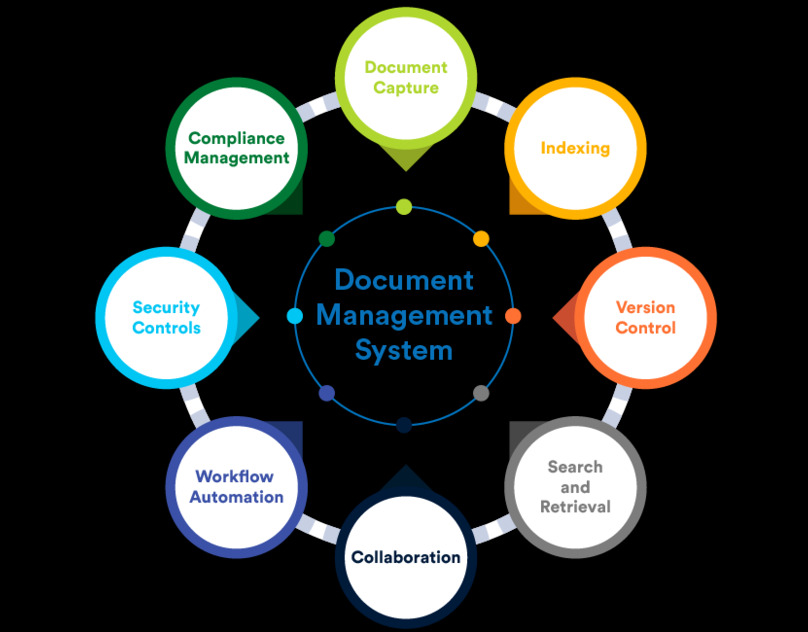In today’s fast-paced business environment, effective document management is more critical than ever, especially in sectors like Life Sciences and Manufacturing. Implementing an efficient document management system can drastically reduce the time spent on administrative tasks and alleviate stress among employees.
Understanding Document Management
What is Document Management?
Document Management involves the organized oversight and administration of documents within a company. This process involves capturing, storing, managing, and tracking electronic documents and images of paper-based information. By organizing documents in a centralized system, businesses can improve accessibility, compliance, and collaboration across departments.
Importance of Document Management
In industries such as Life Sciences and Manufacturing, compliance with regulations is paramount. Document management ensures that all necessary documentation is easily accessible and accurately maintained. This capability not only meets regulatory requirements but also enhances operational efficiency by reducing time spent searching for documents.
The Role of EDMS in Streamlining Processes
What is EDMS?
Electronic Document Management Systems (EDMS) provide a digital solution for managing documents and records. These systems automate many document-related tasks, from creation to approval, significantly enhancing efficiency.
Benefits of Using EDMS
An effective EDMS can help organizations streamline their workflows by enabling faster retrieval of documents, reducing the chances of errors, and ensuring that all team members are working with the most current information. This is especially important in sectors where precision and compliance are crucial.
Reducing Time Spent on Administrative Tasks
Automation of Routine Processes
One of the primary ways document management saves time is through automation. Document management software for life sciences and manufacturing can automate routine tasks such as document routing, approvals, and notifications. This automation minimizes manual interventions, allowing employees to focus on more strategic activities.
Centralized Access to Information
With a robust document management system, all documents are stored in a centralized repository. This centralized access enables quick retrieval of information, reducing the time employees spend searching for files. As a result, teams can work more efficiently, completing tasks faster and meeting deadlines without undue stress.
Enhancing Collaboration Across Teams
Improved Communication Channels
Document management systems facilitate better communication among team members. With features such as version control and real-time collaboration, employees can work together on documents regardless of their location. This cooperative atmosphere promotes collaboration and boosts productivity.
Shared Access to Critical Information
In industries where compliance and precision are essential, having shared access to critical information is invaluable. Document control software for manufacturing ensures that all team members can view the latest versions of documents, reducing the risk of errors caused by outdated information.
Mitigating Stress Through Streamlined Processes
Reducing Information Overload
Excessive information can be a major cause of stress for employees. With an effective document management system, organizations can categorize and prioritize documents, making it easier for employees to find what they need without feeling overwhelmed.
Simplifying Compliance and Audits
Compliance with regulatory standards is a common concern in the Life Sciences and Manufacturing sectors. Document management simplifies the audit process by providing a clear trail of documentation, making it easier to demonstrate compliance during inspections. This peace of mind significantly reduces stress for quality assurance managers and executives.
Ensuring Security and Compliance
Protecting Sensitive Information
Document management systems provide robust security features that protect sensitive information from unauthorized access. By implementing access controls and encryption, organizations can ensure that only authorized personnel can view or modify critical documents.
Meeting Regulatory Requirements
In regulated industries, maintaining compliance is non-negotiable. Document management helps companies adhere to various regulations by providing a systematic way to manage documentation. This compliance not only avoids costly fines but also builds trust with stakeholders.
Choosing the Right Document Management Software
Key Features to Look For
When selecting document management software for life sciences and manufacturing, consider features such as user-friendliness, automation capabilities, integration options, and robust security measures. A well-rounded solution will cater to the specific needs of your organization, enhancing productivity and compliance.
Importance of Vendor Support
Choosing a vendor that offers ongoing support is crucial for long-term success. With proper guidance and training, your organization can fully leverage the capabilities of the document management system, ensuring a smooth transition and maximizing benefits.
Conclusion
In an era where efficiency and compliance are paramount, document management systems play a vital role in reducing time and stress in the workplace. By automating routine tasks, enhancing collaboration, and ensuring security, organizations can operate more effectively. ComplianceQuest offers advanced document management solutions tailored for the Life Sciences and Manufacturing sectors, empowering businesses to stay ahead in a competitive and highly regulated landscape. As we move into 2024, investing in robust document management software will be essential for organizations looking to streamline operations and enhance productivity.





Comments